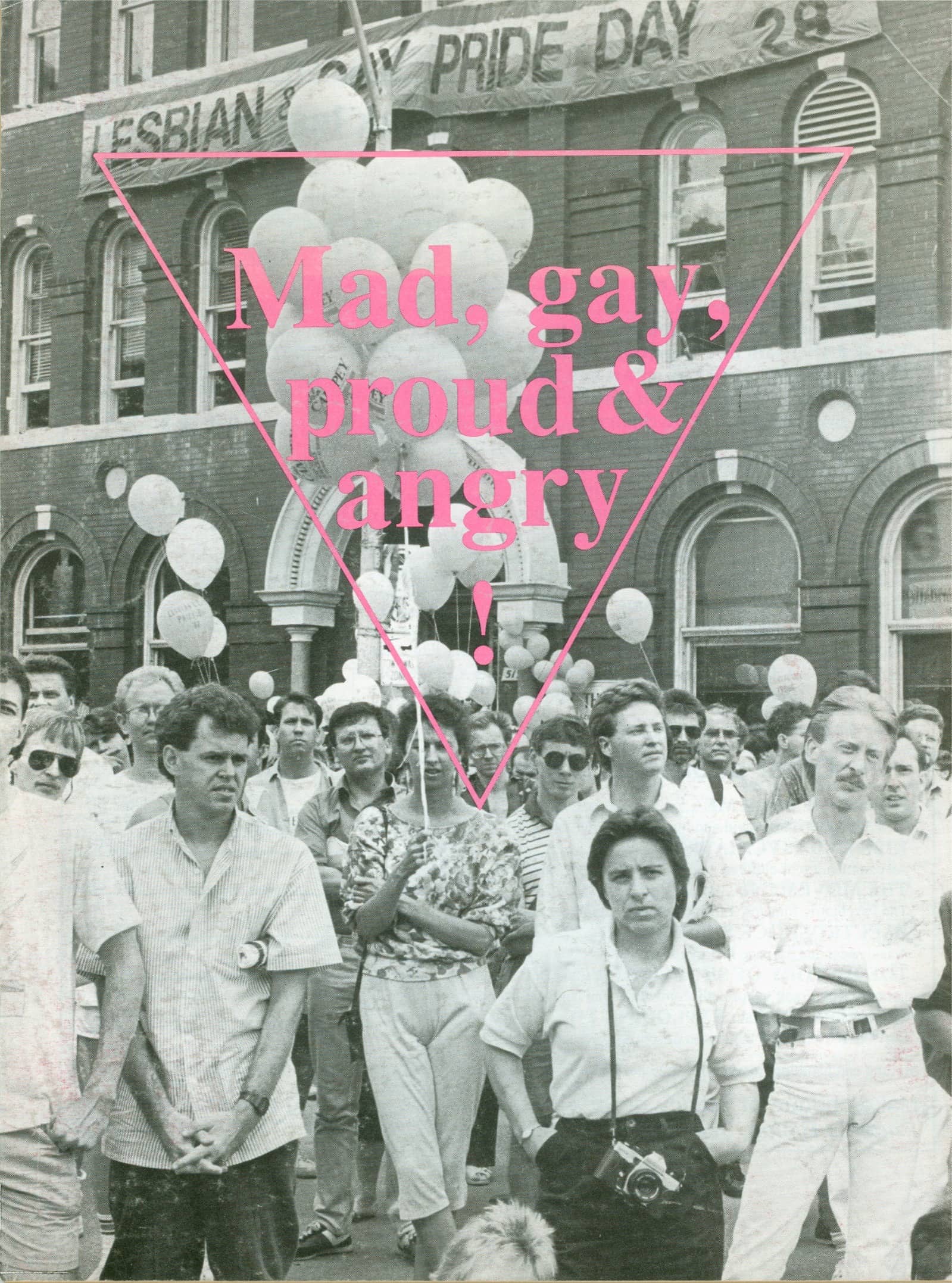Have you ever heard someone say "gay mad" and wondered what exactly they meant by that? Well, buckle up because we’re diving deep into this fascinating phrase. It’s not just some random expression—it carries a lot of weight in today’s cultural landscape. Whether you’re curious about its origins or want to understand its significance, this article will break it all down for you.
Let me set the scene here. The term "gay mad" has been floating around on social media platforms like Twitter and TikTok, but it’s more than just a trendy phrase. It’s about emotions, identity, and how we process feelings in a world that’s constantly evolving. People use it to describe a specific kind of anger that stems from being misunderstood or dismissed, often related to LGBTQ+ issues.
Now, why does this matter? Because language shapes our reality. When we give names to emotions or experiences, we validate them. And that’s powerful. So, whether you’re part of the LGBTQ+ community or an ally, understanding "gay mad" can help foster better communication and empathy. Stick around because there’s a lot to unpack.
- Bronwin Aurora Nude A Comprehensive Exploration
- Masa49 Exploring The Unique Aspects And Importance Of The Masa49 Concept
What Exactly Is Gay Mad?
Alright, let’s get into the nitty-gritty. "Gay mad" isn’t your run-of-the-mill anger—it’s a very particular emotion that resonates with many people in the queer community. Imagine this: you’re already navigating a world that doesn’t always accept you, and then someone says or does something dismissive about your identity. That’s when the "gay mad" kicks in. It’s that mix of frustration, hurt, and righteous indignation.
For instance, if someone makes a joke at the expense of LGBTQ+ rights, or if they refuse to acknowledge the struggles faced by the community, it can trigger this emotion. It’s not just about being upset—it’s about feeling invalidated and unseen. And let’s be real, who hasn’t felt that way at some point?
Origins of the Term
So where did "gay mad" even come from? Like many modern phrases, it likely started on social media. Platforms like Twitter and TikTok are breeding grounds for new slang, and "gay mad" is no exception. It gained traction because it resonated with so many people who had experienced similar emotions but didn’t have the words to describe them.
- Jasi Bae Naked A Comprehensive Exploration
- Facecheck Id Your Ultimate Guide To Identity Verification Solutions
Think about it—language evolves to meet the needs of those using it. Just as "hangry" became a thing to describe being angry due to hunger, "gay mad" fills a gap in describing a specific kind of emotional response tied to identity and validation.
Why Does Gay Mad Matter?
This might seem like just another internet buzzword, but trust me, it carries real importance. Recognizing "gay mad" acknowledges the unique challenges faced by the LGBTQ+ community. It’s not just about being angry—it’s about feeling seen and heard. And in a world where acceptance isn’t always guaranteed, that’s huge.
Moreover, understanding this concept can lead to greater empathy and understanding between people. If you’re not part of the community, learning about "gay mad" can help you become a better ally. And if you are part of the community, it can give you a sense of solidarity knowing that others feel the same way.
The Intersection of Identity and Emotion
Here’s the thing—emotions are deeply tied to identity. When someone dismisses your identity, it’s not just a casual insult—it’s a blow to your core sense of self. That’s why "gay mad" is so potent. It’s not just anger—it’s a reaction to being invalidated on a fundamental level.
And let’s not forget that this isn’t limited to LGBTQ+ individuals. Anyone who’s ever felt dismissed because of who they are can relate to this emotion. It’s a universal experience that just happens to have a very specific name in this context.
How to Handle Gay Mad
So, what do you do when you’re feeling "gay mad"? First off, acknowledge it. Don’t try to suppress your emotions—let yourself feel them. It’s okay to be upset when someone disrespects your identity. Once you’ve processed your feelings, you can decide how to respond.
Here are a few tips:
- Talk to someone you trust about how you’re feeling.
- Take a break from the situation if possible.
- Channel your energy into something positive, like activism or creativity.
- Remember that your feelings are valid and important.
Handling "gay mad" isn’t about suppressing it—it’s about managing it in a healthy way. And sometimes, that means speaking out and standing up for yourself.
Support Systems and Community
One of the best ways to deal with "gay mad" is to lean on your support systems. Whether that’s friends, family, or online communities, having people who understand and validate your feelings can make a world of difference. And let’s be real, the LGBTQ+ community is full of incredible people who’ve got each other’s backs.
So, if you’re feeling "gay mad," don’t hesitate to reach out. Chances are, someone else has been there too, and they’ll know exactly what you’re going through.
Common Misconceptions About Gay Mad
There are a few misconceptions floating around about "gay mad" that need to be addressed. Some people think it’s just about being overly sensitive or that it’s not a real emotion. But that couldn’t be further from the truth. "Gay mad" is a legitimate response to real-life experiences of discrimination and invalidation.
Others might assume that it’s only applicable to certain members of the LGBTQ+ community, but that’s not the case either. Anyone who identifies as queer can experience "gay mad," regardless of their specific identity. It’s a shared experience that unites many people under the banner of queer solidarity.
Debunking the Myths
Let’s break down some of these myths:
- Myth: "Gay mad" is just about being overly sensitive.
Reality: It’s a valid emotional response to real-life experiences of discrimination. - Myth: Only certain people can feel "gay mad."
Reality: Anyone in the LGBTQ+ community can experience it. - Myth: It’s not a real emotion.
Reality: It’s a very real and important concept that deserves recognition.
Understanding these truths can help foster greater empathy and understanding between people.
How Allies Can Help
If you’re not part of the LGBTQ+ community, there are still ways you can support those who might be feeling "gay mad." First and foremost, listen. Don’t try to dismiss or minimize their feelings—just be there to hear them out. And if they’re comfortable sharing, ask how you can help.
Another great way to support is by educating yourself. Learn about the issues facing the LGBTQ+ community and how you can be a better ally. There are plenty of resources out there—books, articles, and even social media accounts dedicated to raising awareness.
Actions Speak Louder Than Words
Being an ally isn’t just about saying the right things—it’s about taking action. Whether that’s standing up to homophobia when you see it or supporting LGBTQ+ causes, every little bit helps. And don’t forget to check in on your queer friends and family. Sometimes, just knowing someone cares can make all the difference.
Statistics and Data
Let’s talk numbers for a second. According to a 2021 report by GLAAD, 60% of LGBTQ+ individuals have experienced some form of discrimination in their lifetime. That’s a pretty staggering statistic, and it helps to explain why "gay mad" is such a prevalent emotion.
Moreover, studies show that LGBTQ+ individuals are more likely to experience mental health issues due to societal stigma and discrimination. This highlights the importance of recognizing and validating emotions like "gay mad." It’s not just about feeling upset—it’s about addressing the root causes of those feelings.
The Importance of Representation
Representation matters, and it’s not just about seeing yourself in media. It’s about feeling seen and understood in everyday life. When people see positive representations of LGBTQ+ individuals, it helps to combat stereotypes and promote acceptance. And that, in turn, can reduce the triggers for "gay mad."
Conclusion: Embracing Gay Mad
So, there you have it—a deep dive into the world of "gay mad." Whether you’re part of the LGBTQ+ community or an ally, understanding this concept can help foster greater empathy and understanding. It’s not just about being angry—it’s about feeling seen and heard.
Now, here’s where you come in. If you’ve learned something from this article, share it with others. Start conversations, ask questions, and keep the dialogue going. And if you’re feeling "gay mad," remember that your feelings are valid and important.
Thanks for sticking around and reading through this lengthy piece. If you enjoyed it, feel free to leave a comment or share it with your friends. And hey, why not check out some of our other articles while you’re at it? There’s always more to learn, and we’re here to help.
Table of Contents
- Decoding the "Gay Mad" Phenomenon
- What Exactly Is Gay Mad?
- Origins of the Term
- Why Does Gay Mad Matter?
- The Intersection of Identity and Emotion
- How to Handle Gay Mad
- Support Systems and Community
- Common Misconceptions About Gay Mad
- Debunking the Myths
- How Allies Can Help
- Actions Speak Louder Than Words
- Statistics and Data
- The Importance of Representation
- Conclusion: Embracing Gay Mad
- Camilla Araujo Onlyfans Leaked A Comprehensive Look Into The Issue
- Camila Araujo Nudes Facts Misconceptions And The Truth Behind The Headlines


